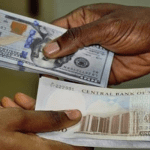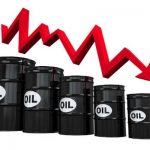The dollar extended losses against the yen and the Swiss franc on Thursday as investors feeling increasingly nervous over the future of Donald Trump’s U.S. presidency sought safe havens for their money.
After some signs of stability in Asia, dollar selling resumed in the European morning as Reuters reported that investigators were looking at records of numerous undisclosed contacts between the Trump campaign and Russian officials.
The franc, a traditional destination for capital in times of financial or political stress, hit a 10-day high against the euro and its strongest since Trump’s election last November against the dollar.
The yen, which saw its biggest daily gain against the dollar since last July on Wednesday, gained another 0.4 percent to 110.24 yen.
“Risk aversion is rife once again with the brewing political storm surrounding President Trump in the U.S. largely being blamed,” said Craig Erlam, a market analyst with retail broker Oanda in London.
“While I don’t believe at this stage that these reports regarding Trump will jeopardize his agenda, markets must reflect the challenges he now faces.”
The dollar surged late last year on the assumption that Trump would boost U.S. growth and inflation with a combination of tax cuts and spending while also encouraging repatriation of foreign-held corporate capital to the United States.
That faith has steadily evaporated in 2017 as he struggled to deliver on promises of “phenomenal” tax reform and a new healthcare bill, and rows over other parts of the administration erupted.
Meanwhile, a run of downbeat U.S. economic data in the past month has weakened expectations for further rises in Federal Reserve interest rates this year.
“While there could be a meaningful dollar recovery on the horizon, the short-term picture still suggests room for a little more weakness,” said Joel Kruger, a strategist with LMAX Exchange in London.
“It’s important to note that this move in the dollar was already in play, with the market assigning too much of the weakness to this political distraction. The U.S. administration’s protectionist policies and softer data have been the primary drivers.”
Still, the fall was not all-encompassing.
A drop in global oil prices that went along with weaker stock markets hurt commodities-linked currencies including the Canadian dollar and the Norwegian crown down by 0.3 and 0.7 percent respectively against the greenback.
The dollar was also marginally higher on the day against the euro at $1.1121.
“After the massive rally in bonds yesterday we have seen something of a snapback,” said Jeremy Stretch, head of currency strategy with CIBC World Markets in London.
“It remains to be seen whether we can move on from the political issues around Trump and Russia. We haven’t been dollar bulls for a while and even if we see some more recovery this does just look like the tail-end of the dollar’s run (higher).”
The dollar extended losses against the yen and the Swiss franc on Thursday as investors feeling increasingly nervous over the future of Donald Trump’s U.S. presidency sought safe havens for their money.
After some signs of stability in Asia, dollar selling resumed in the European morning as Reuters reported that investigators were looking at records of numerous undisclosed contacts between the Trump campaign and Russian officials.
The franc, a traditional destination for capital in times of financial or political stress, hit a 10-day high against the euro and its strongest since Trump’s election last November against the dollar.
The yen, which saw its biggest daily gain against the dollar since last July on Wednesday, gained another 0.4 percent to 110.24 yen.
“Risk aversion is rife once again with the brewing political storm surrounding President Trump in the U.S. largely being blamed,” said Craig Erlam, a market analyst with retail broker Oanda in London.
“While I don’t believe at this stage that these reports regarding Trump will jeopardize his agenda, markets must reflect the challenges he now faces.”
The dollar surged late last year on the assumption that Trump would boost U.S. growth and inflation with a combination of tax cuts and spending while also encouraging repatriation of foreign-held corporate capital to the United States.
That faith has steadily evaporated in 2017 as he struggled to deliver on promises of “phenomenal” tax reform and a new healthcare bill, and rows over other parts of the administration erupted.
Meanwhile, a run of downbeat U.S. economic data in the past month has weakened expectations for further rises in Federal Reserve interest rates this year.
“While there could be a meaningful dollar recovery on the horizon, the short-term picture still suggests room for a little more weakness,” said Joel Kruger, a strategist with LMAX Exchange in London.
“It’s important to note that this move in the dollar was already in play, with the market assigning too much of the weakness to this political distraction. The U.S. administration’s protectionist policies and softer data have been the primary drivers.”
Still, the fall was not all-encompassing.
A drop in global oil prices that went along with weaker stock markets hurt commodities-linked currencies including the Canadian dollar and the Norwegian crown down by 0.3 and 0.7 percent respectively against the greenback.
The dollar was also marginally higher on the day against the euro at $1.1121.
“After the massive rally in bonds yesterday we have seen something of a snapback,” said Jeremy Stretch, head of currency strategy with CIBC World Markets in London.
“It remains to be seen whether we can move on from the political issues around Trump and Russia. We haven’t been dollar bulls for a while and even if we see some more recovery this does just look like the tail-end of the dollar’s run (higher).”
The dollar extended losses against the yen and the Swiss franc on Thursday as investors feeling increasingly nervous over the future of Donald Trump’s U.S. presidency sought safe havens for their money.
After some signs of stability in Asia, dollar selling resumed in the European morning as Reuters reported that investigators were looking at records of numerous undisclosed contacts between the Trump campaign and Russian officials.
The franc, a traditional destination for capital in times of financial or political stress, hit a 10-day high against the euro and its strongest since Trump’s election last November against the dollar.
The yen, which saw its biggest daily gain against the dollar since last July on Wednesday, gained another 0.4 percent to 110.24 yen.
“Risk aversion is rife once again with the brewing political storm surrounding President Trump in the U.S. largely being blamed,” said Craig Erlam, a market analyst with retail broker Oanda in London.
“While I don’t believe at this stage that these reports regarding Trump will jeopardize his agenda, markets must reflect the challenges he now faces.”
The dollar surged late last year on the assumption that Trump would boost U.S. growth and inflation with a combination of tax cuts and spending while also encouraging repatriation of foreign-held corporate capital to the United States.
That faith has steadily evaporated in 2017 as he struggled to deliver on promises of “phenomenal” tax reform and a new healthcare bill, and rows over other parts of the administration erupted.
Meanwhile, a run of downbeat U.S. economic data in the past month has weakened expectations for further rises in Federal Reserve interest rates this year.
“While there could be a meaningful dollar recovery on the horizon, the short-term picture still suggests room for a little more weakness,” said Joel Kruger, a strategist with LMAX Exchange in London.
“It’s important to note that this move in the dollar was already in play, with the market assigning too much of the weakness to this political distraction. The U.S. administration’s protectionist policies and softer data have been the primary drivers.”
Still, the fall was not all-encompassing.
A drop in global oil prices that went along with weaker stock markets hurt commodities-linked currencies including the Canadian dollar and the Norwegian crown down by 0.3 and 0.7 percent respectively against the greenback.
The dollar was also marginally higher on the day against the euro at $1.1121.
“After the massive rally in bonds yesterday we have seen something of a snapback,” said Jeremy Stretch, head of currency strategy with CIBC World Markets in London.
“It remains to be seen whether we can move on from the political issues around Trump and Russia. We haven’t been dollar bulls for a while and even if we see some more recovery this does just look like the tail-end of the dollar’s run (higher).”
The dollar extended losses against the yen and the Swiss franc on Thursday as investors feeling increasingly nervous over the future of Donald Trump’s U.S. presidency sought safe havens for their money.
After some signs of stability in Asia, dollar selling resumed in the European morning as Reuters reported that investigators were looking at records of numerous undisclosed contacts between the Trump campaign and Russian officials.
The franc, a traditional destination for capital in times of financial or political stress, hit a 10-day high against the euro and its strongest since Trump’s election last November against the dollar.
The yen, which saw its biggest daily gain against the dollar since last July on Wednesday, gained another 0.4 percent to 110.24 yen.
“Risk aversion is rife once again with the brewing political storm surrounding President Trump in the U.S. largely being blamed,” said Craig Erlam, a market analyst with retail broker Oanda in London.
“While I don’t believe at this stage that these reports regarding Trump will jeopardize his agenda, markets must reflect the challenges he now faces.”
The dollar surged late last year on the assumption that Trump would boost U.S. growth and inflation with a combination of tax cuts and spending while also encouraging repatriation of foreign-held corporate capital to the United States.
That faith has steadily evaporated in 2017 as he struggled to deliver on promises of “phenomenal” tax reform and a new healthcare bill, and rows over other parts of the administration erupted.
Meanwhile, a run of downbeat U.S. economic data in the past month has weakened expectations for further rises in Federal Reserve interest rates this year.
“While there could be a meaningful dollar recovery on the horizon, the short-term picture still suggests room for a little more weakness,” said Joel Kruger, a strategist with LMAX Exchange in London.
“It’s important to note that this move in the dollar was already in play, with the market assigning too much of the weakness to this political distraction. The U.S. administration’s protectionist policies and softer data have been the primary drivers.”
Still, the fall was not all-encompassing.
A drop in global oil prices that went along with weaker stock markets hurt commodities-linked currencies including the Canadian dollar and the Norwegian crown down by 0.3 and 0.7 percent respectively against the greenback.
The dollar was also marginally higher on the day against the euro at $1.1121.
“After the massive rally in bonds yesterday we have seen something of a snapback,” said Jeremy Stretch, head of currency strategy with CIBC World Markets in London.
“It remains to be seen whether we can move on from the political issues around Trump and Russia. We haven’t been dollar bulls for a while and even if we see some more recovery this does just look like the tail-end of the dollar’s run (higher).”
The dollar extended losses against the yen and the Swiss franc on Thursday as investors feeling increasingly nervous over the future of Donald Trump’s U.S. presidency sought safe havens for their money.
After some signs of stability in Asia, dollar selling resumed in the European morning as Reuters reported that investigators were looking at records of numerous undisclosed contacts between the Trump campaign and Russian officials.
The franc, a traditional destination for capital in times of financial or political stress, hit a 10-day high against the euro and its strongest since Trump’s election last November against the dollar.
The yen, which saw its biggest daily gain against the dollar since last July on Wednesday, gained another 0.4 percent to 110.24 yen.
“Risk aversion is rife once again with the brewing political storm surrounding President Trump in the U.S. largely being blamed,” said Craig Erlam, a market analyst with retail broker Oanda in London.
“While I don’t believe at this stage that these reports regarding Trump will jeopardize his agenda, markets must reflect the challenges he now faces.”
The dollar surged late last year on the assumption that Trump would boost U.S. growth and inflation with a combination of tax cuts and spending while also encouraging repatriation of foreign-held corporate capital to the United States.
That faith has steadily evaporated in 2017 as he struggled to deliver on promises of “phenomenal” tax reform and a new healthcare bill, and rows over other parts of the administration erupted.
Meanwhile, a run of downbeat U.S. economic data in the past month has weakened expectations for further rises in Federal Reserve interest rates this year.
“While there could be a meaningful dollar recovery on the horizon, the short-term picture still suggests room for a little more weakness,” said Joel Kruger, a strategist with LMAX Exchange in London.
“It’s important to note that this move in the dollar was already in play, with the market assigning too much of the weakness to this political distraction. The U.S. administration’s protectionist policies and softer data have been the primary drivers.”
Still, the fall was not all-encompassing.
A drop in global oil prices that went along with weaker stock markets hurt commodities-linked currencies including the Canadian dollar and the Norwegian crown down by 0.3 and 0.7 percent respectively against the greenback.
The dollar was also marginally higher on the day against the euro at $1.1121.
“After the massive rally in bonds yesterday we have seen something of a snapback,” said Jeremy Stretch, head of currency strategy with CIBC World Markets in London.
“It remains to be seen whether we can move on from the political issues around Trump and Russia. We haven’t been dollar bulls for a while and even if we see some more recovery this does just look like the tail-end of the dollar’s run (higher).”
The dollar extended losses against the yen and the Swiss franc on Thursday as investors feeling increasingly nervous over the future of Donald Trump’s U.S. presidency sought safe havens for their money.
After some signs of stability in Asia, dollar selling resumed in the European morning as Reuters reported that investigators were looking at records of numerous undisclosed contacts between the Trump campaign and Russian officials.
The franc, a traditional destination for capital in times of financial or political stress, hit a 10-day high against the euro and its strongest since Trump’s election last November against the dollar.
The yen, which saw its biggest daily gain against the dollar since last July on Wednesday, gained another 0.4 percent to 110.24 yen.
“Risk aversion is rife once again with the brewing political storm surrounding President Trump in the U.S. largely being blamed,” said Craig Erlam, a market analyst with retail broker Oanda in London.
“While I don’t believe at this stage that these reports regarding Trump will jeopardize his agenda, markets must reflect the challenges he now faces.”
The dollar surged late last year on the assumption that Trump would boost U.S. growth and inflation with a combination of tax cuts and spending while also encouraging repatriation of foreign-held corporate capital to the United States.
That faith has steadily evaporated in 2017 as he struggled to deliver on promises of “phenomenal” tax reform and a new healthcare bill, and rows over other parts of the administration erupted.
Meanwhile, a run of downbeat U.S. economic data in the past month has weakened expectations for further rises in Federal Reserve interest rates this year.
“While there could be a meaningful dollar recovery on the horizon, the short-term picture still suggests room for a little more weakness,” said Joel Kruger, a strategist with LMAX Exchange in London.
“It’s important to note that this move in the dollar was already in play, with the market assigning too much of the weakness to this political distraction. The U.S. administration’s protectionist policies and softer data have been the primary drivers.”
Still, the fall was not all-encompassing.
A drop in global oil prices that went along with weaker stock markets hurt commodities-linked currencies including the Canadian dollar and the Norwegian crown down by 0.3 and 0.7 percent respectively against the greenback.
The dollar was also marginally higher on the day against the euro at $1.1121.
“After the massive rally in bonds yesterday we have seen something of a snapback,” said Jeremy Stretch, head of currency strategy with CIBC World Markets in London.
“It remains to be seen whether we can move on from the political issues around Trump and Russia. We haven’t been dollar bulls for a while and even if we see some more recovery this does just look like the tail-end of the dollar’s run (higher).”
The dollar extended losses against the yen and the Swiss franc on Thursday as investors feeling increasingly nervous over the future of Donald Trump’s U.S. presidency sought safe havens for their money.
After some signs of stability in Asia, dollar selling resumed in the European morning as Reuters reported that investigators were looking at records of numerous undisclosed contacts between the Trump campaign and Russian officials.
The franc, a traditional destination for capital in times of financial or political stress, hit a 10-day high against the euro and its strongest since Trump’s election last November against the dollar.
The yen, which saw its biggest daily gain against the dollar since last July on Wednesday, gained another 0.4 percent to 110.24 yen.
“Risk aversion is rife once again with the brewing political storm surrounding President Trump in the U.S. largely being blamed,” said Craig Erlam, a market analyst with retail broker Oanda in London.
“While I don’t believe at this stage that these reports regarding Trump will jeopardize his agenda, markets must reflect the challenges he now faces.”
The dollar surged late last year on the assumption that Trump would boost U.S. growth and inflation with a combination of tax cuts and spending while also encouraging repatriation of foreign-held corporate capital to the United States.
That faith has steadily evaporated in 2017 as he struggled to deliver on promises of “phenomenal” tax reform and a new healthcare bill, and rows over other parts of the administration erupted.
Meanwhile, a run of downbeat U.S. economic data in the past month has weakened expectations for further rises in Federal Reserve interest rates this year.
“While there could be a meaningful dollar recovery on the horizon, the short-term picture still suggests room for a little more weakness,” said Joel Kruger, a strategist with LMAX Exchange in London.
“It’s important to note that this move in the dollar was already in play, with the market assigning too much of the weakness to this political distraction. The U.S. administration’s protectionist policies and softer data have been the primary drivers.”
Still, the fall was not all-encompassing.
A drop in global oil prices that went along with weaker stock markets hurt commodities-linked currencies including the Canadian dollar and the Norwegian crown down by 0.3 and 0.7 percent respectively against the greenback.
The dollar was also marginally higher on the day against the euro at $1.1121.
“After the massive rally in bonds yesterday we have seen something of a snapback,” said Jeremy Stretch, head of currency strategy with CIBC World Markets in London.
“It remains to be seen whether we can move on from the political issues around Trump and Russia. We haven’t been dollar bulls for a while and even if we see some more recovery this does just look like the tail-end of the dollar’s run (higher).”
The dollar extended losses against the yen and the Swiss franc on Thursday as investors feeling increasingly nervous over the future of Donald Trump’s U.S. presidency sought safe havens for their money.
After some signs of stability in Asia, dollar selling resumed in the European morning as Reuters reported that investigators were looking at records of numerous undisclosed contacts between the Trump campaign and Russian officials.
The franc, a traditional destination for capital in times of financial or political stress, hit a 10-day high against the euro and its strongest since Trump’s election last November against the dollar.
The yen, which saw its biggest daily gain against the dollar since last July on Wednesday, gained another 0.4 percent to 110.24 yen.
“Risk aversion is rife once again with the brewing political storm surrounding President Trump in the U.S. largely being blamed,” said Craig Erlam, a market analyst with retail broker Oanda in London.
“While I don’t believe at this stage that these reports regarding Trump will jeopardize his agenda, markets must reflect the challenges he now faces.”
The dollar surged late last year on the assumption that Trump would boost U.S. growth and inflation with a combination of tax cuts and spending while also encouraging repatriation of foreign-held corporate capital to the United States.
That faith has steadily evaporated in 2017 as he struggled to deliver on promises of “phenomenal” tax reform and a new healthcare bill, and rows over other parts of the administration erupted.
Meanwhile, a run of downbeat U.S. economic data in the past month has weakened expectations for further rises in Federal Reserve interest rates this year.
“While there could be a meaningful dollar recovery on the horizon, the short-term picture still suggests room for a little more weakness,” said Joel Kruger, a strategist with LMAX Exchange in London.
“It’s important to note that this move in the dollar was already in play, with the market assigning too much of the weakness to this political distraction. The U.S. administration’s protectionist policies and softer data have been the primary drivers.”
Still, the fall was not all-encompassing.
A drop in global oil prices that went along with weaker stock markets hurt commodities-linked currencies including the Canadian dollar and the Norwegian crown down by 0.3 and 0.7 percent respectively against the greenback.
The dollar was also marginally higher on the day against the euro at $1.1121.
“After the massive rally in bonds yesterday we have seen something of a snapback,” said Jeremy Stretch, head of currency strategy with CIBC World Markets in London.
“It remains to be seen whether we can move on from the political issues around Trump and Russia. We haven’t been dollar bulls for a while and even if we see some more recovery this does just look like the tail-end of the dollar’s run (higher).”













